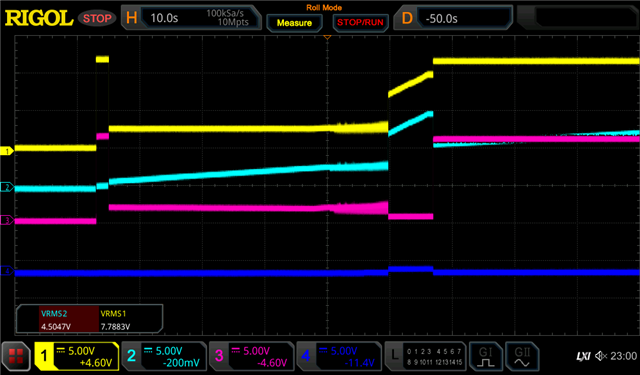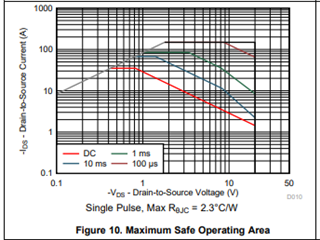Other Parts Discussed in Thread: CSD25402Q3A
Hello TI,
I currently have the BQ25713-evm and I am using it to charge 4 2.7v 30F supercaps to 10.4v. One, I observe a large ripple when voltage reaches setpoint, and two when I get to my set point I want to switch my vsys to 12v, however this cause my Vbat to fall to 5 volts and slowly recharge back up to 10.4v.
My register settings are as follows:
{{CHRG_CURRENT, 0x0000},
{CHRG_OPTION_0, 0x0606},
{CHRG_OPTION_2, 0x0275},
{ADC_OPT, 0x80FF},
{CHRG_STATUS, 0x0000},
{MIN_SYS_VOLT, 0x0C00},
{MAX_CHRG_VOLT, 0x2740},
{CHRG_CURRENT, 0x0A00},
{IIN_HOST, 0x4000},
{CHRG_OPTION_1, 0x8210},
{CHRG_OPTION_0, 0x060E}};
When Vbat gets to my set voltage I change MinSysVoltage to 12v, Ive also tried inhibiting charging first then setting vsys to 12v but in both cases I get vbat knocked down to 5v

Yellow = Vsys,
light blue = Vbat
pink = batdrv




